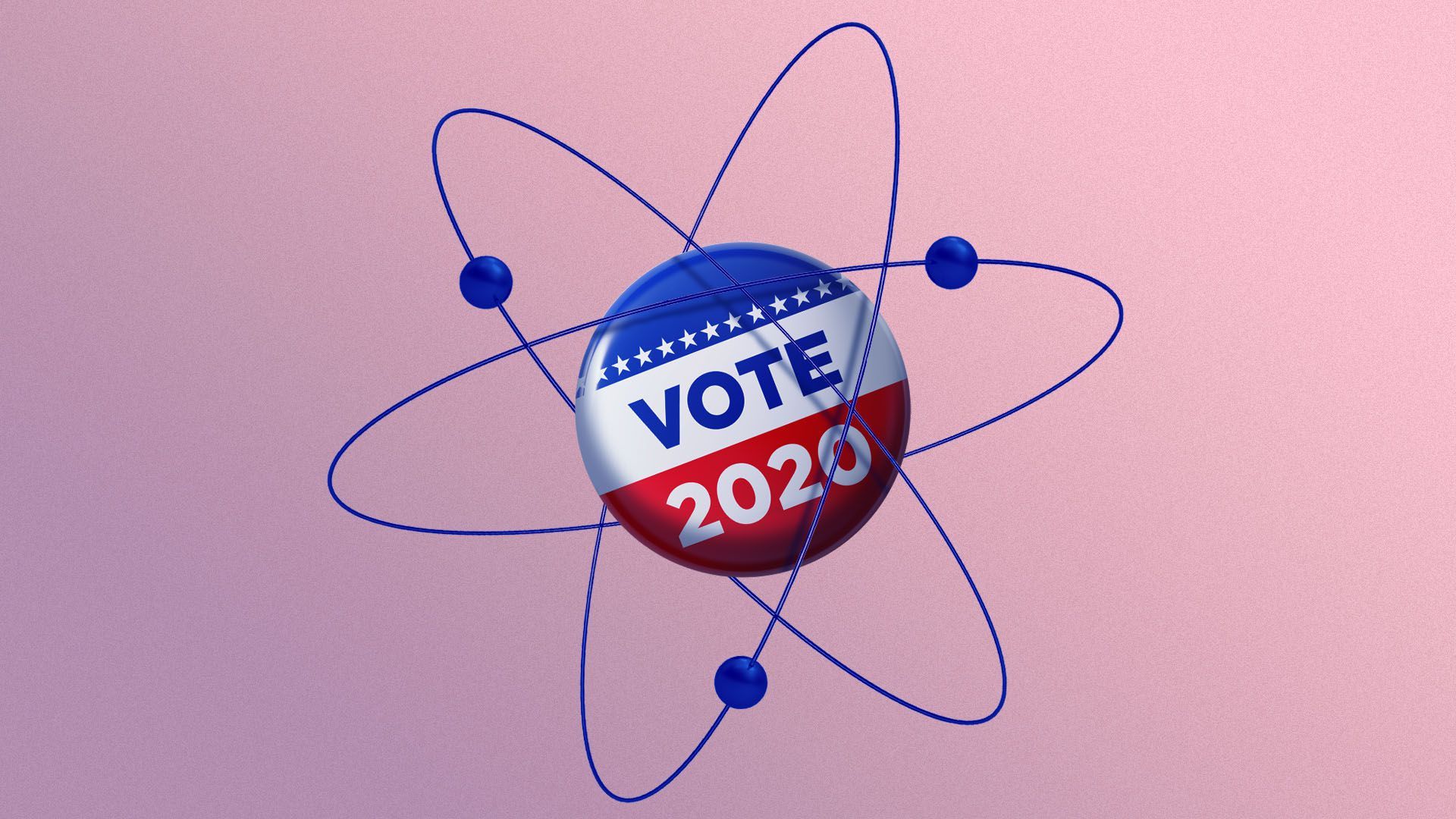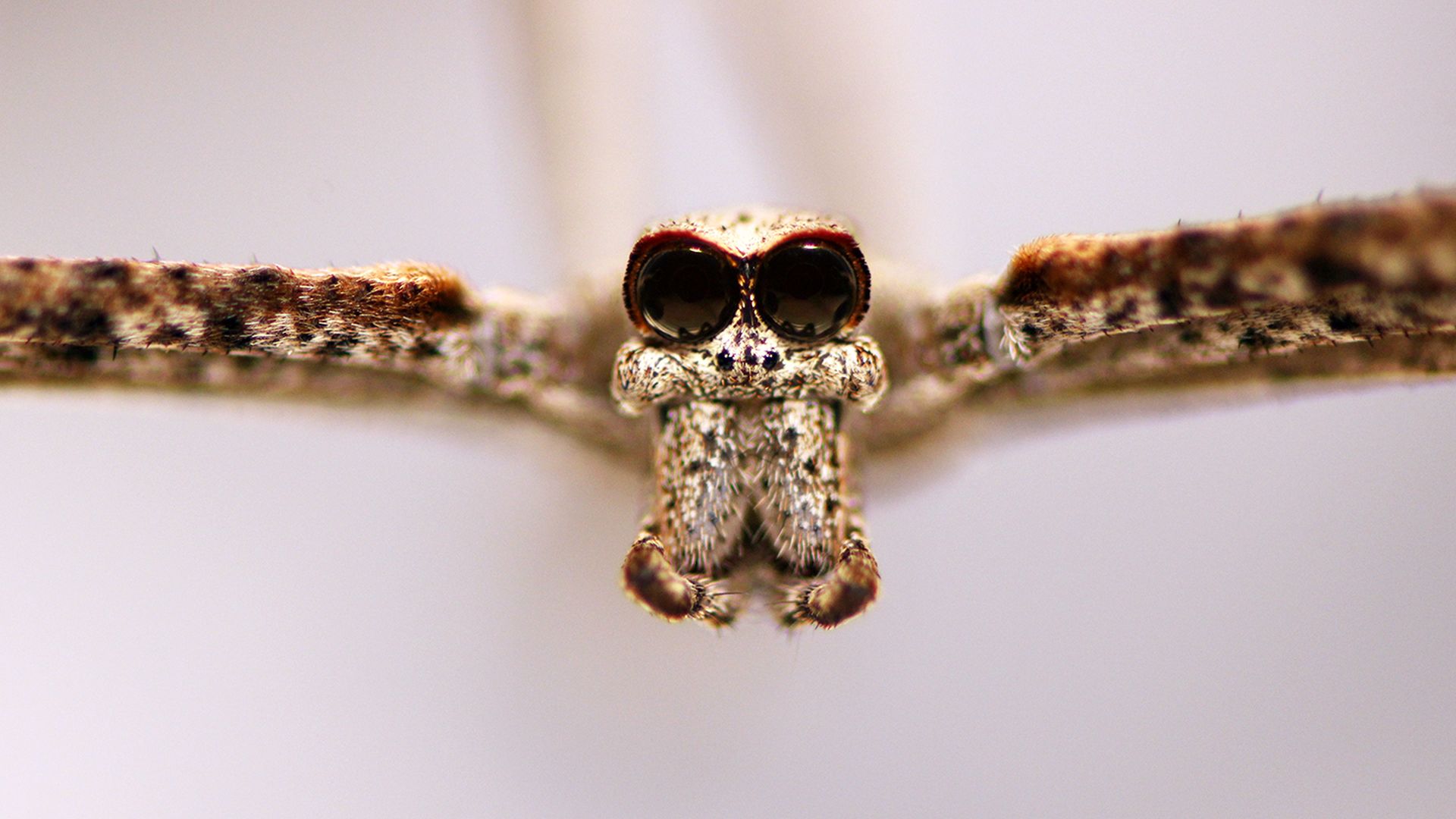| | | | | | | Axios Science | | By Alison Snyder ·Oct 29, 2020 | | Thanks for reading Axios Science. This week we dive deep into science policies, politics and perceptions, catch up on COVID-19 news, and more. - Send your feedback and ideas to me at alison@axios.com. You can reach Eileen Drage O'Reilly at eileen@axios.com.
- If you're not already an Axios Science subscriber, sign up here.
- Quick note: This newsletter will be off next week and back in your inbox on Nov. 12.
Today's edition is 1,723 words, a 6½-minute read. | | | | | | 1 big thing: The norms around science and politics are cracking |  | | | Illustration: Aïda Amer/Axios | | | | Crafting successful public health measures depends on the ability of top scientists to gather data and report their findings unrestricted to policymakers, Axios' Eileen Drage O'Reilly reports. State of play: But concern has spiked among health experts and physicians over what they see as an assault on key science protections, particularly during a raging pandemic. And a move last week by President Trump, via an executive order, is triggering even more worries. What's happening: If implemented, the order creates a "Schedule F" class of federal employees who are policymakers from certain agencies who would no longer have protection against being easily fired — and would likely include some veteran civil service scientists who offer key guidance to Congress and the White House. - Those agencies might handle the order differently, and it is unclear how many positions could fall under Schedule F — but some say possibly thousands.
- "This much-needed reform will increase accountability in essential policymaking positions within the government," OMB director Russ Vought tells Axios in a statement.
What they're saying: Several medical associations, including the Infectious Diseases Society of America, strongly condemned the action, and Democrats on the House oversight panel demanded the administration "immediately cease" implementation. - "If you take how it's written at face value, it has the potential to turn every government employee into a political appointee, who can be hired and fired at the whim of a political appointee or even the president," says University of Colorado Boulder's Roger Pielke Jr.
- Protections for members of civil service allow them to argue for evidence-based decision-making and enable them to provide the best advice, says CRDF Global's Julie Fischer, adding that "federal decision-makers really need access to that expertise — quickly and ideally in house."
Between the lines: Politics plays some role in science, via funding, policymaking and national security issues. - The public health system is a mix of agency leaders who are political appointees, like HHS Secretary Alex Azar, and career civil servants not dependent on the president's approval, like NIAID director Anthony Fauci.
- "Public health is inherently political because it has to do with controlling the way human beings move around," says University of Pennsylvania's Jonathan Moreno.
Yes, but: The norm is to have a robust discussion — and what has been happening under the Trump administration is not the norm, some say. - "Schedule F is just remarkable," Pielke says. "It's not like political appointees editing a report, [who are] working within the system to kind of subvert the system. This is an effort to completely redefine the system."
- The Center for Strategic and International Studies' Stephen Morrison says that the administration has been defying normative practices, including statements denigrating scientists, the CDC and FDA.
The big picture: Public trust in scientists, which tends to be high, is taking a hit, not only due to messaging from the administration but also from public confusion over changes in guidance, which vacillated over masks and other suggestions. - Public health institutions "need to have the trust of the American people. In order to have the trust of the American people, they can't have their autonomy and their credibility compromised, and they have to have a voice," Morrison says.
What's next: The scientific community is going to need to be proactive on rebuilding public trust in how the scientific process works and being clear when guidance changes, why it has changed, Fischer says. Go deeper: Read the full story. |     | | | | | | 2. What the 2020 election means for science |  | | | Illustration: Sarah Grillo/Axios | | | | The 2020 presidential election presents two stark paths for the direction of future-focused scientific research, Axios' Bryan Walsh and I write. Why it matters: Science is a long game, with today's breakthroughs often stemming from research carried out decades ago, often with government help. - That means the person who occupies the White House over the next four years will help shape the state of technology for decades into the future.
Where it stands: For the fourth straight year, the Trump administration's 2020 budget proposal called for deep cuts to agencies like the National Institutes of Health and the National Science Foundation, though Congress has generally staved off those spending reductions, and actually increased funding. - Yes, but: In 2019, Trump committed to doubling non-defense AI and quantum information sciences (QIS) research funding over the next two years, and this summer, the White House announced hundreds of millions in awards to create multiple federal research centers dedicated to AI and QIS.
The other side: The focus on AI and quantum computing is likely to continue under Biden, but his agenda could also include cancer (he led the Obama administration's cancer initiative), while reinvigorating climate change research. - Biden proposes a $300 billion increase in R&D funding that, like Trump, emphasizes "new breakthrough technology R&D programs to direct investments to key technologies in support of U.S. competitiveness — including 5G, artificial intelligence, advanced materials, biotechnology, and clean vehicles," according to the campaign's platform.
The foreign factor: Perhaps the biggest question the U.S. faces on science is its relationship with China. Under the Trump administration, there's been intense scrutiny of research partnerships and investigations into foreign influence on U.S. research that some experts argue is eroding collaborations, while federal agencies say the focus is on unethical behavior. - The administration also proposed or enacted severe visa restrictions for students and scholars, arguing they protect American workers. But experts counter cutting off foreign talent will ultimately hurt U.S. competitiveness.
- The Biden campaign has said he would ease visa restrictions on foreign students and exempt from any visa cap Ph.D. graduates in the STEM fields.
Go deeper: |     | | | | | | 3. Catch up quick on COVID-19 |  Data: The COVID Tracking Project, state health departments; Map: Andrew Witherspoon, Sara Wise/Axios Cases: "On average, nearly 72,000 people tested positive for the coronavirus every day over the past week. That's the highest seven-day average on record," Axios' Sam Baker reports. Hospitalizations: "Some states are seeing dangerous levels of coronavirus hospitalizations, with hospitals warning that they could soon become overwhelmed if no action is taken to slow the spread," Axios' Caitlin Owens reports. Vaccines: AstraZeneca reported its COVID-19 vaccine elicits an immune response in older people as well as young people, per CNBC. Treatments: Eli Lilly said its antibody cocktail treatment doesn't help patients hospitalized with COVID-19, per the NYT. - Both Eli Lilly and Regeneron announced encouraging results with other antibody treatments for people with less-severe symptoms but supply is limited, Matthew Herper writes in STATNews.
|     | | | | | | 4. Pandemic scrambles Americans' acceptance of science |  | | | Illustration: Sarah Grillo/Axios | | | | The pandemic is throwing a wrench into Americans' understanding of science, which has big implications for climate change, Axios' Amy Harder reports. Driving the news: Recent focus groups in battleground states suggest some voters are more skeptical of scientists in the wake of the coronavirus pandemic, while surveys reveal the persistence of a deep partisan divide. Why it matters: Climate change, because it is slower moving and its impacts more diffuse than those of the pandemic, is going to be even harder to tackle. Where it stands: Swing voters in five battleground states — Ohio, Iowa, Pennsylvania, Michigan and Wisconsin — surveyed over the last six months expressed increasing skepticism about science as the pandemic took over America. How it works: The voters were asked whether, during the pandemic, scientific experts are a net-plus or net-minus when it comes to guiding public policy. - In more recent months — August, September and October — the voters were more evenly divided on the question.
- In earlier months (April to July), more voters said scientists were a net-positive than said they were a net-negative.
The intrigue: Nearly a third of voters in several battleground states say they have greater confidence in scientists since the pandemic, while 22% say their trust in science has weakened, according to a survey conducted by centrist think tank Third Way and ALG Research. - That survey reiterated what Pew Research Center has found, which is that any increase in trust with experts has occurred almost exclusively among Democrats.
Go deeper: Read the full story and survey methodology. |     | | | | | | 5. Worthy of your time |  | | | Photo: NASA/JPL/USGS | | | | NASA confirms water exists on sunny parts of the Moon (Miriam Kramer — Axios) "Sleeping giant" Arctic methane deposits starting to release, scientists find (Jonathan Watts — The Guardian) Honeywell's new H1 quantum computer (Bryan Walsh — Axios) These bizarre ancient species are rewriting animal evolution (Traci Watson — Nature News) |     | | | | | | 6. Something wondrous |  | | | Ogre-faced spider. Photo: Jay Stafstrom/Cornell University | | | | The enormous eyes of the ogre-faced spider aren't their only tool for hunting: They can also hear a wide range of sounds — without ears, according to new research. The big picture: Spiders have many senses — from smelling airborne chemical cues to sensing humidity — whose underlying mechanisms are a mystery. - "For hundreds of millions of years, they've been evolving to capture environmental information in ways that are quite alien to us," says Jay Stafstrom, a sensory ecologist at Cornell University and co-author of the paper published today in Current Biology.
During the day, ogre-faced net-casting spiders plays dead, says study co-author Ronald Hoy of Cornell. "When the sun goes down, they change their personalities and become Mr. Hyde, predators, killers." - Instead of spinning webs and waiting for their prey, the spiders (Deinopis spinosa) cast nets over them — when the insects are on the ground and even in the air.
- In an earlier study, Stafstrom covered the spiders' eyes with silicone, and found they still caught their prey from out of the air, suggesting they were using something other than their massive eyes to hunt.
What they did: Stafstrom and his colleagues placed electrodes in the spiders' brains (which are about the size of a sesame seed) and measured their neural activity while they played different frequency sounds from 6.5 feet away. - They also put electrodes in spider legs to see if the receptors that directly sense vibrations from the ground and other surfaces could also pick up sound.
- Both the spiders' brains and the leg receptors responded to sounds between 100 and 10,000 Hz.
- Stafstrom then played sounds to 25 spiders in the wild and found 13 responded to 150, 400 and 750 Hz sounds (similar to those made by their prey) with their signature move: a backflip strike they use for hunting.
- Curiously, the spiders stayed still at higher frequencies, which the researchers hypothesize may be because similar tones are made by their predators.
That the ogre-eyed spider is responding to auditory cues is a "huge surprise," says Lisa Chamberland, who studies the same family of spiders at the University of Vermont but wasn't involved in the research. |     | | | | | | Axios thanks our partners for supporting our newsletters.
Sponsorship has no influence on editorial content. Axios, 3100 Clarendon Blvd, Suite 1300, Arlington VA 22201 | | | You received this email because you signed up for newsletters from Axios.
Change your preferences or unsubscribe here. | | | Was this email forwarded to you?
Sign up now to get Axios in your inbox. | | | | Follow Axios on social media:    | | | | | |









No comments:
Post a Comment